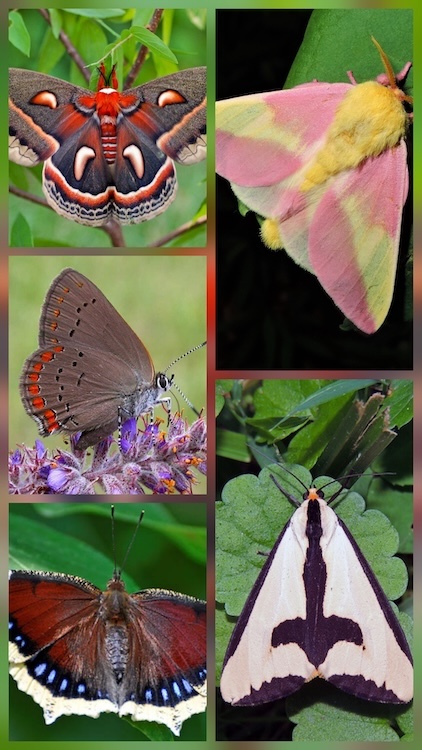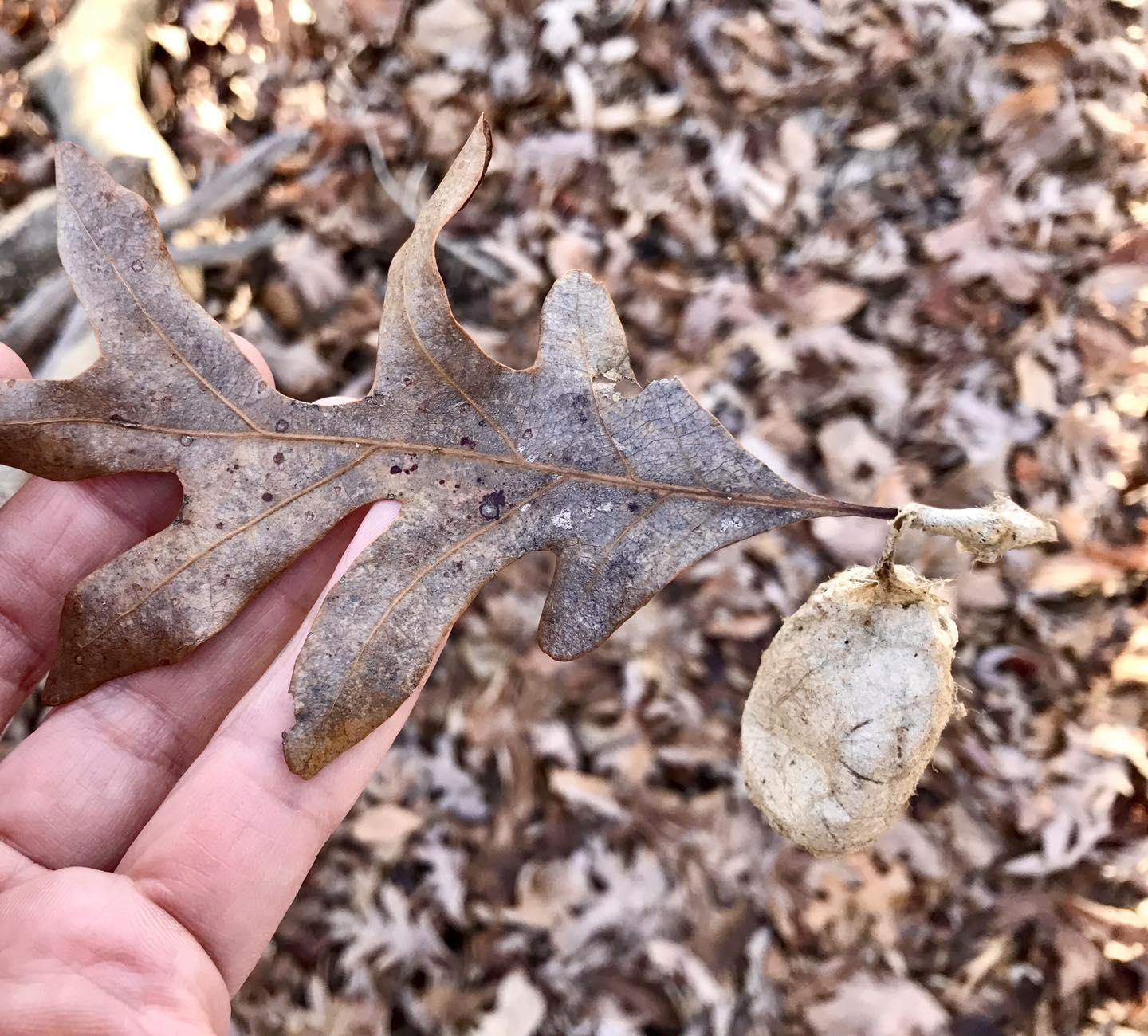By Margaret Carreiro, Ph.D., Biology; Louisville Audubon Society Board Member
On one of my early-morning walks in Aug. 2025, I noticed something curious in my neighborhood: While a few yards boasted bright flowers, most had nothing more than grass, evergreen shrubs, and a tree or two planted like lollipops in the lawn. The turf beneath those trees was meticulously mown.
That’s when it struck me—I needed to write more about the importance of creating “soft landings “under trees.
Insects are in trouble
You may not realize it, but we’re in the middle of what scientists are calling an “Insect Apocalypse.” Insects like butterflies, moths, and dragonflies are declining rapidly. The cause? A lack of quality habitat throughout their entire life cycle.
Dragonflies start life in water and move to land. Butterflies and moths spend all life stages on land, but their caterpillar and pupal stages are especially vulnerable—and often forgotten.
The role of native trees
Most gardeners now know it’s not enough to simply plant flowers for adult butterflies. To support the full life cycle, we must provide host plants—plants their caterpillars eat.
Among all host plants, trees support the most species of butterflies and moths:
- Native oaks: 534 species
- Willows, cherries, and plums: 456 species
- Maples and box elder: 285 species
These same caterpillars are also the top food source for birds—especially songbirds.

Some common native trees and the butterflies & moths they support
Oaks: Red Spotted Purple, Banded Hairstreak, Cecropia Moth, Rosy Maple moth
Maples: Rosy Maple moth, Cecropia moth, Maple Looper, Imperial moth
Willows: Mourning Cloak butterfly, Eastern Tiger Swallowtail, Io moth
Cherries: Coral Hairstreak, Striped Hairstreak, Red Spotted Purple, Cecropia moth
Image: a few butterflies and moths that benefit from soft landings. Clockwise from upper right: Rosy Maple moth, Clymene moth, Mourning Cloak butterfly, Coral Hairstreak butterfly, Cecropia moth
Caterpillars: essential parts of a bird’s diet
Caterpillars offer birds the ideal nutritional package: They’re high in fat and protein, and easy to digest and handle. One study found chickadee parents need 6,000–9,000 caterpillars to raise a single brood to fledgling stage over just 16 to 18 days!
Trees full of caterpillars make that job easier. And it’s not just important during breeding season. Migrating birds also depend on caterpillars to fuel their long journeys.
The overlooked pupal stage
Planting trees is great—but what happens after the caterpillar stage? To complete the life cycle, butterflies and moths must pupate.
Some caterpillars attach to leaves. Others crawl down the trunk to pupate in the soil or leaf litter. But what do most homeowners do?
- Rake and bag leaves—removing pupae attached to them
- Mow leaves—shredding hidden pupae
- Maintain compact grass under trees—making it impossible for pupae to survive
What’s a “soft landing,” and why are they important?
A “soft landing” is an area under trees with leaf litter and native plants instead of mown grass. It gives caterpillars a safe place to pupate and emerge as adults.
Here’s how to create one:
- Stop mowing under the canopy
- Smother grass using wet cardboard
- Add a 3-inch layer of leaves, wet the layer, and weigh it down with branches
- Weigh down cardboard with stones or bricks
The cardboard and leaves will decompose over the winter. By springtime, the soil beneath the tree will be spongier, softer, and ready for planting. At that time, plant native shade-tolerant species using a trowel—not a shovel—to protect the tree’s delicate feeder roots
Once established, these plants will catch more fallen leaves and help maintain soft, rich soil for years to come.
Avoiding “ecological traps”
Did you know planting trees in mown lawns may actually be worse than having no tree at all?
It created what’s called an ecological trap: A female butterfly lays her eggs on the tree’s leaves, thinking it’s a good spot. But when her caterpillars drop to the ground to pupate, they face a hostile environment—bare, mown, compacted soil.
Creating a soft landing helps the entire life cycle—and supports the next generation of butterflies, moths, and the birds that depend on them.
Native ground covers for northern Kentucky
Here are some excellent low-growing native plants for soft landings. These cover the ground densely, protect soil, suppress weeds, and offer shelter to native insects year-round.
- May-apple (Podophyllum peltatum)
- Canada wild ginger (Asarum canadense)
- Creeping wood phlox (Phlox stolonifera)
- Foamflower (Tiarella cordifolia)
- Native violets (Viola spp.)
- Golden groundsel (Packera spp.)
- Lady fern (Athyrium filix-femina)
- Moss phlox (Phlox subulata)
- Wild strawberry (Fragaria virginiana)

No responses yet